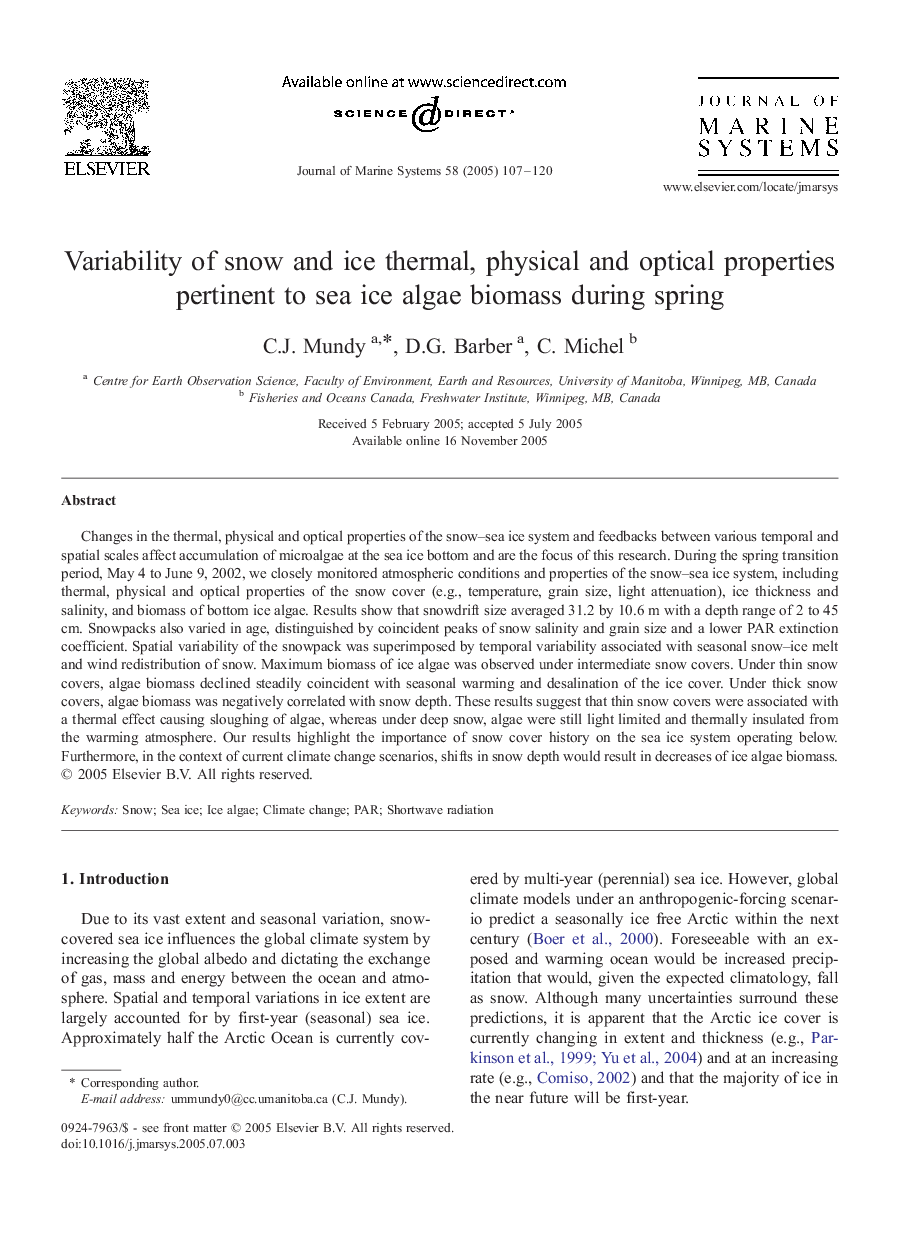| Article ID | Journal | Published Year | Pages | File Type |
|---|---|---|---|---|
| 9483543 | Journal of Marine Systems | 2005 | 14 Pages |
Abstract
Changes in the thermal, physical and optical properties of the snow-sea ice system and feedbacks between various temporal and spatial scales affect accumulation of microalgae at the sea ice bottom and are the focus of this research. During the spring transition period, May 4 to June 9, 2002, we closely monitored atmospheric conditions and properties of the snow-sea ice system, including thermal, physical and optical properties of the snow cover (e.g., temperature, grain size, light attenuation), ice thickness and salinity, and biomass of bottom ice algae. Results show that snowdrift size averaged 31.2 by 10.6 m with a depth range of 2 to 45 cm. Snowpacks also varied in age, distinguished by coincident peaks of snow salinity and grain size and a lower PAR extinction coefficient. Spatial variability of the snowpack was superimposed by temporal variability associated with seasonal snow-ice melt and wind redistribution of snow. Maximum biomass of ice algae was observed under intermediate snow covers. Under thin snow covers, algae biomass declined steadily coincident with seasonal warming and desalination of the ice cover. Under thick snow covers, algae biomass was negatively correlated with snow depth. These results suggest that thin snow covers were associated with a thermal effect causing sloughing of algae, whereas under deep snow, algae were still light limited and thermally insulated from the warming atmosphere. Our results highlight the importance of snow cover history on the sea ice system operating below. Furthermore, in the context of current climate change scenarios, shifts in snow depth would result in decreases of ice algae biomass.
Related Topics
Physical Sciences and Engineering
Earth and Planetary Sciences
Oceanography
Authors
C.J. Mundy, D.G. Barber, C. Michel,
